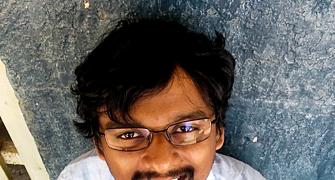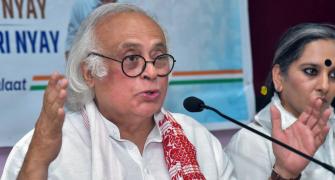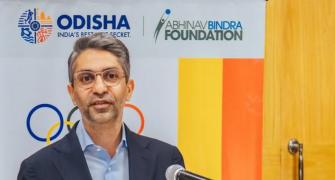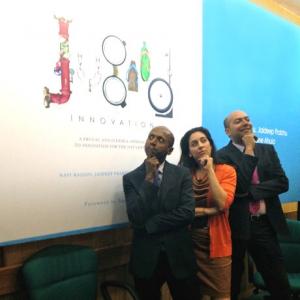'Let me talk about young Indian startups with their hearts in the right place and how they are proving that innovations that represent 'affordable excellence' is indeed possible!' says Dr R A Mashelkar, the eminent scientist, in this fascinating feature.
Dr R A Mashelkar -- Chairman, National Innovation Foundation; former director general, Council of Scientific & Industrial Research, and secretary, Department of Scientific & Industrial Research -- delivered the 2018 K R Narayanan Oration at the Australian National University.
This is the concluding segment of what Dr Mashelkar, one of India's leading scientists, said:
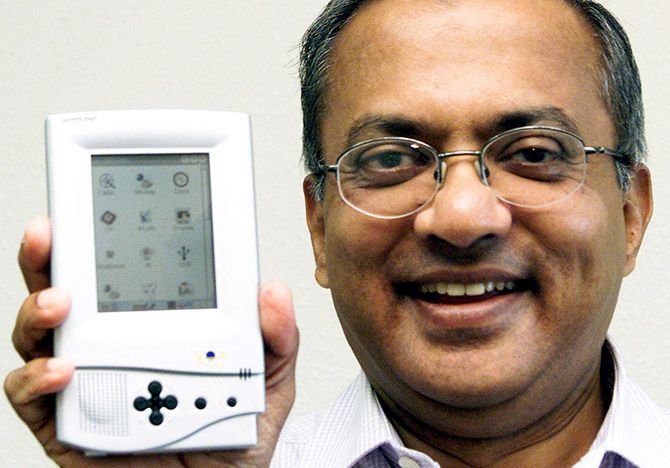
'Before the arrival of the smart phone in 2003, the Simputer had anticipated some breakthrough technologies that are now commonplace in mobile devices,' says Dr Mashelkar. Photograph: Jagadeesh Nv/Reuters
Now one might say, a company like Reliance has deep pockets, so they could do it.
What about small businesses? What about start-ups? Yes, they can also aspire to do well by doing good, and many of them do.
Let me illustrate the point by talking about some winners of the Anjani Mashelkar Inclusive Innovation Award -- an award I instituted in my mother's name for innovations that will do good to society at large, not just a privileged few.
The awardees are those who believe in not just 'best practices', but 'next practices'.
And most importantly meet those tough criteria of ASSURED innovations that represent 'affordable excellence', breaking the myth that 'affordability' and 'excellence' cannot go together.
Let me talk about young Indian startups with their hearts in the right place and how they are proving that all this is indeed possible!

In 2015, breast cancer replaced cervical cancer as the leading cause of cancer deaths among women in India.
 In 2015, breast cancer replaced cervical cancer
In 2015, breast cancer replaced cervical cancerIn India alone, almost 200 million women aged 35 to 55 do not undergo necessary annual breast exams which could potentially save their lives.
 Almost 200 million women aged 35 to 55 do not undergo breast exams
Almost 200 million women aged 35 to 55 do not undergo breast examsWorldwide, this number is even higher.
Late stage detection is the main reason behind breast cancer deaths.
So how can we ensure that women in every corner of India -- in fact, the world -- undergoes breast cancer screening?

UE LifeSciences led by Mihir Shah has developed a handheld device that is used for early detection of breast tumours.
It is simple, accurate, and affordable.
It is painless because it is non-invasive.
Mammography and radiation are eliminated.
Screenings are safe, pain-free and private.
They have also deployed an innovative pay-per-use model -- instead of targeting direct sales -- which can empower doctors in every corner of the country to start screening women for breast cancer at the earliest.
The device is US FDA cleared and CE marked.
It is operable by any community health worker.
And it only costs an amazing ₹65 ($1) per scan!
But UE Lifesciences is not only doing good, it is also doing well.
In the last year or so, the device has earned nearly 1 million dollars in revenue and received purchase orders totalling nearly 2 million dollars.
The company has also entered into a strategic partnership with GE Healthcare for marketing and distribution of iBreastExam across more than 25+ countries in Africa, South Asia and South-East Asia and benefit more than 500 million women.
Most recently, it was launched in Botswana with a local partner.
 Cardiovascular diseases are predicted to be the largest cause of death and disability in India by 2020
Cardiovascular diseases are predicted to be the largest cause of death and disability in India by 2020This example is not a one-off success story.
Here is another: Cardiovascular diseases are predicted to be the largest cause of death and disability in India by 2020.
Amidst the rising incidents of cardiac diseases -- even among younger people -- there is a pressing need to affordably, speedily and accurately monitor the heart health of Indians.
This has been achieved by another awardee, Rahul Rastogi, who created a portable match box size 12- lead ECG machine.
The cost is just ₹5 (8 cents) per ECG test.
His company created a disruptive high-tech innovative solution for personal cardiac care -- the 'Sanket' electrocardiogram (ECG) device.
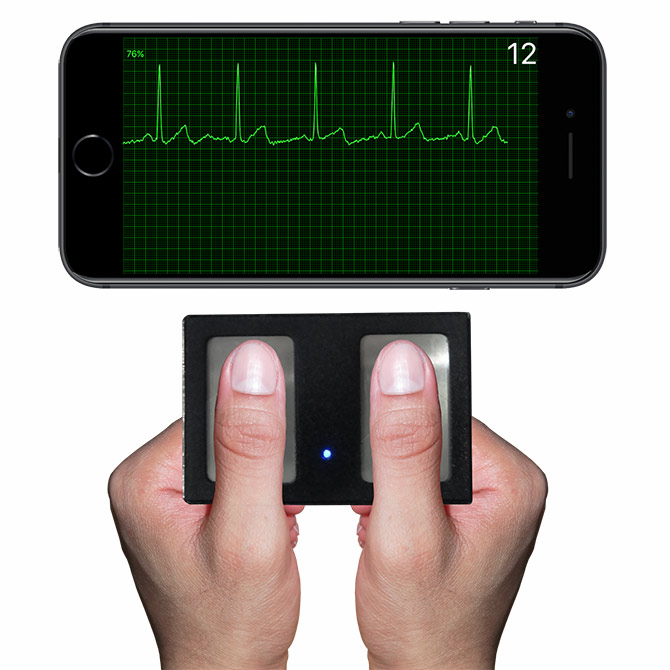
Sanket is a credit card-sized heart monitor, which acts like a portable ECG machine, making it possible to monitor the heart condition, making it as simple as monitoring the body temperature.
The high-tech 12-lead ECG recorder connects to a smartphone wirelessly, and displays and records ECG graphs on a smartphone.
The ECG report can be shared instantly with a doctor via e-mail, Bluetooth or message.
The affordable device marks a dramatic shift in the way we approach cardiac care -- doing away with expensive ECG machines, distant hospitals or laboratories, and skilled technicians.
Sanket has filed multiple patents and is all set to bring about a revolution in cardiac care and disrupt this space.
Most recently, they partnered with Tata Trusts to deploy 45 devices in clinics in Tripura for quick screening and diagnosis of cardiac diseases.
In the remote and hilly state of Tripura, regular screening would have been virtually impossible.
And then there is the third Anjani Mashelkar Inclusive Innovation Awardee, 3nethra, an eye screening device.
 80% of all blindness is avoidable or curable
80% of all blindness is avoidable or curableIt is so sad that 80% of all blindness is avoidable or curable.
India is home to the largest number of vision impaired individuals -- but it is not just a numbers problem.
The problem of preventable blindness is fraught with challenges such as the significantly low number of properly trained ophthalmologists, lack of awareness, un-scalable solutions and inadequate reach which in turn magnifies the problem manifold.
Adding to these challenges are problems of cost and accessibility barriers for diagnostic services.

Eye screening device 3nethra provides a portable and cost-effective solution.
The innovation comes at a cost that is one fifth of a regular ophthalmic screening device and one that can be operated by a minimally trained operator.
It is an intelligent, portable, non-invasive, non-mydriatic (meaning not requiring eye dilation) low cost device that helps in pre-screening of five major eye diseases, namely, cataract, diabetic retinopathy, glaucoma, defects in the cornea & refractive errors with a powerful inbuilt auto detection software.
It is a combination of robust hardware with cloud based computing and sophisticated image analysis solutions.
The unique feature of the product is its versatile functionality -- detection of five common eye problems in a single screening, automated analysis and report generation; and cloud based storage of individual data, all rolled into a single, compact machine.
Today, they have 1,700 device installations across 26 countries and have touched 2 million lives.
Public Procurement Policy for ASSURED Innovation
I have shared with you a few examples of ASSURED innovations, but India is home to dozens, perhaps hundreds of such innovations, which could have been ASSURED Innovations.
There are many young Indians championing the cause of development and who have been endowed with unique attributes of innovation, compassion and passion.
But it is a sad fact that in terms of ASSURED innovation, from supply side, they managed the elements of A, U, R, E and D but missed on S & S, meaning they could not achieve scale and sustainability.
One was a near miss.
Another was a total miss.
Let me talk about the near miss first.
We covered the Anjani Mashelkar Inclusive Innovation Award in three of India's most pressing health concerns -- cancer, cardiovascular disease and needless blindness.
But there's another that demands our attention: Dengue.
 Dengue incidence has increased by more than 30-fold in the past 50 years
Dengue incidence has increased by more than 30-fold in the past 50 yearsThe winner last year was Navin Khanna dealing with the challenge of dengue detection.
Dengue is a neglected mosquito born viral disease that is rapidly spreading globally.
Dengue incidence has increased by more than 30-fold in the past 50 years.
Currently, half of the global population lives under dengue threat.

At the International Centre for Genetic Engineering and Biotechnology in India, Dr Navin Khanna developed a test that can help address this problem.
The three-in-one 'Dengue Day 1 Test' can detect dengue fever within minutes on day one of the fever, affordably in resource-poor settings.
It can differentiate between primary and secondary dengue virus infections, which is so vital for clinical management of dengue infected individuals.
Interestingly, it can also detect the presence of the virus in a mosquito.
The test kit is now a market leader in India, having captured more than 80% market share.
Its cost is 3 to 4 times less than a conventional test at a little over $2 per test.
The test kit is now being exported to other countries too.
However, their path to success wasn't an easy one.
Despite having a high-performing rapid dengue test that could detect both primary and secondary dengue virus infections in a reliable manner, it was still an uphill task to get it accepted by the end-users.
It was 2013, and many cities in India witnessed a large number of dengue cases.
Three companies from the USA, Australia and South Korea sold their yearly stock of dengue test kits within a few weeks and no test kit was available for use in the Indian market.
When the India-made kit was offered to them, it was met with great resistance.
Most end-users were unwilling to try a new kit and were waiting for arrival of new consignments of dengue kits from other countries.
Because of the extensive paperwork required for import of these tests, companies from the USA and Australia were unable to make the next shipment of dengue kits to India, however, a South Korean company was able to ship a new consignment to India.
This shipment landed up in Africa by mistake instead of reaching India!
So the scenario was bleak in India, no dengue kits were available and suspected dengue cases were increasing and creating mass panic.
It was at this stage that the end-users relented and tried the Indian kit -- after which there was no looking back.
All stakeholders were delighted with the easy availability, high performing, and affordable dengue test kit.
When stocks of imported kits finally showed up in India, there were no takers.
In this case, serendipity and not a system played the biggest role.
So the near miss was Navin Khanna's Dengue Day 1 test.
The total miss was Simputer.
Let me explain.
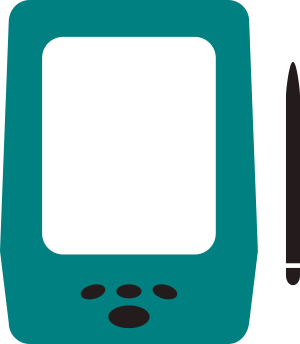 Simputer was designed to be a low cost and portable alternative to PCs.
Simputer was designed to be a low cost and portable alternative to PCs.Simputer was designed to be a low cost and portable alternative to PCs.
The idea was to create shared devices that permit truly simple and natural user interfaces based on sight, touch and audio.
Simputer was to read and speak in several Indian languages in its initial release.
Simputer prototypes were launched by the Simputer Trust on April 25, 2001.
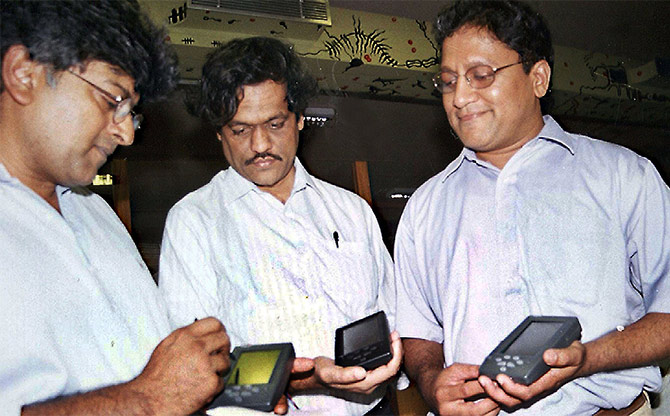
The professors have now formed a company, PicoPeta Simputers Pvt Ltd, which will make software tools to enable content and education using the Simputer. Photograph: Reuters
It was hailed for its 'radical simplicity for universal access'.
Before the arrival of the smart phone in 2003, the Simputer had anticipated some breakthrough technologies that are now commonplace in mobile devices.
One of them was the accelerometer, introduced to the rest of the world for the first time in the iPhone.
The other was doodle on mail, the ability to write on a phone, that was later a major feature on the Samsung Galaxy phones.
Bruce Sterling writing in the New York Times magazine had said, 'The most significant innovation in computer technology in 2001 was not Apple's gleaming titanium PowerBook G4 or Microsoft's Windows XP. It was the Simputer, a net-linked, radically simple portable computer, intended to bring the computer revolution to the third world.'
Despite having achieved the elements of A, U, R, E & D in ASSURED, what went missing was S & S, namely scale and sustainability.
This was because of the absence of innovation-friendly public procurement policy despite many rural-specific demonstrations.
Innovations are products of creative interaction of supply and demand.
Besides supply side initiatives, we need aggressive demand side initiatives -- and public procurement is an obvious choice.
With large procurement budgets, the government can not only be the biggest, but also the most influential and demanding customer of these innovations, making them truly ASSURED.
The government approach could be based on three pillars.
First, government could act as the 'first buyer' and an 'early user' for small, innovative firms and manage the consequent risk thus providing the initial revenue and customer feedback they need to survive and refine their products and services so that they can later compete effectively in the global marketplace.
Interestingly, based on a survey of 1,100 innovative firms in Germany, it was found that public procurement is especially effective for smaller firms in regions under economic stress, a helpful lesson for India.
Second, government can set up regulations that can successfully drive innovation either indirectly through altering market structure and affecting the funds available for investment, or directly through boosting or limiting demand for particular products and services.
Third, government can set standards that can create market power by creating demand for innovation.
Agreed standards will ensure that the risk taken by both early adopters and innovators is lower, thus increasing investment in innovation.
The standards should be set at a demanding level of functionality without specifying which solution must be followed.
By not prescribing a specific route, innovation is bound to flourish.
Role of Strong Public Policy
There is also a case where private sector wanted to do public good, but due to lack of public policy, it did not scale up.
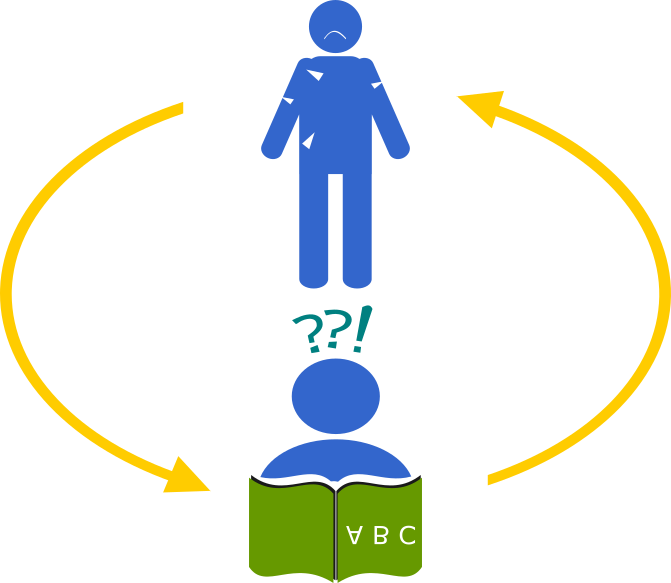 Poverty forms a vicious circle
Poverty forms a vicious circleAs we all know -- and some of us may have experienced -- poverty forms a vicious circle.
People are poor because they are illiterate.
They are illiterate because they are poor.
India's National Literacy Mission has been making slow progress to address the challenge of adult literacy in India since 1988 -- 'slow progress' because there are still almost 300 million adult illiterates in India.
An Indian company developed a unique technique to address this problem.
 Technique harmonized visual and audio patterns to enable reading, and helped retention of cognized patterns in subconscious memory
Technique harmonized visual and audio patterns to enable reading, and helped retention of cognized patterns in subconscious memoryF C Kohli from Tata Consultancy Services came up with an innovative teaching method based on the theory of cognition and laws of perception.
Their initiative, called Computer Based Functional Literacy or CBFL could teach an illiterate individual to read a newspaper with only 40 hours of training! They took a systems approach and used multimedia to focus on words rather than the alphabet.
Their technique harmonized visual and audio patterns to enable reading, and helped retention of cognized patterns in subconscious memory.
The cost worked out to only $2 per person, as opposed to $16 per person using conventional methods.
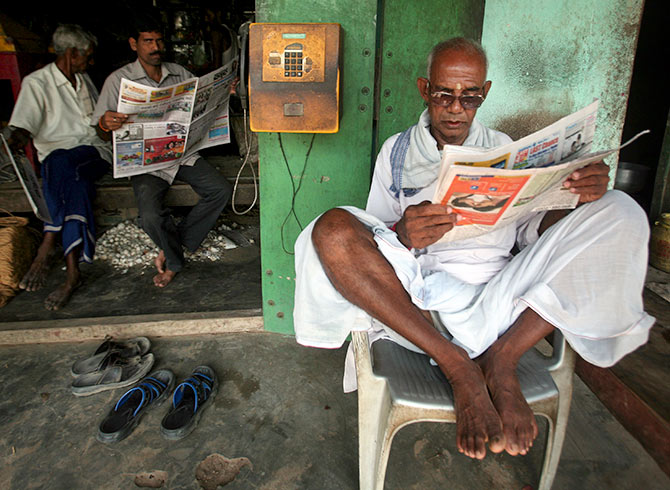
CBFL didn't require any certified professional teachers -- only para-teachers called 'preraks', which is Hindi for inspirers.
CBFL's dropout rates at 10-12% were much lower than that of conventional initiatives.
It allowed for both flexibility in learning and standardisation in teaching.
While the method focused on reading, it acted as a trigger for people to learn to write on their own.
This experiment was first conducted in Medak village near Hyderabad.
Without a trained teacher, the women started reading the newspaper in Telugu in 8 to 10 weeks.
Thereafter, F C Kohli's team carried out more experiments at 80 centres, and with over 1,000 adult participants.
The results were spectacular.
If we had wholeheartedly adopted this in India, our entire population could have been made literate in just 5 to 7 years!
The potential was massive -- there are 800 million illiterates in the world -- this innovation could make them literate by spending less than US$2 billion.
However, lack of the right policy environment limited CBFL's scale-up.
IT ministries or literacy departments didn't partner with CBFL.
There was no infrastructure support for network and the mass procurement of IT hardware posed huge logistical problems.
Add to that issues related to customs clearances, octroi and other similar tariffs.
This is a glaring example of when an innovation could have impacted not just India, but the entire world, but still failed to scale up due to lack of support.
But here is a contrary example of how a hard and strong public policy can work.
Just over a year ago, I would have said that we stand on the cusp of a digital revolution.
Today, I can say without any ambiguity that we are right in the midst of it.
Our nation created history in 2014 when under the Pradhan Mantri Jan Dhan Yojna 1,80,96,130 bank accounts were opened in India in just one week, creating a Guinness World Record.
It will provide access to various basic financial services for the excluded -- basic savings bank account, need-based credit, remittance facility, insurance and pension.
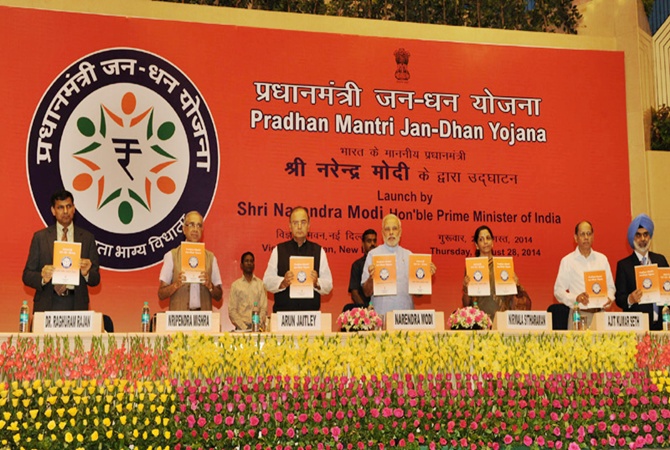
 JAM = J (Pradhan Mantri Jan Dhan Yojana) + (Aaadhar identification and authentication) + M (mobile telecommunications)
JAM = J (Pradhan Mantri Jan Dhan Yojana) + (Aaadhar identification and authentication) + M (mobile telecommunications) JAM combining J (Pradhan Mantri Jan Dhan Yojana), A (Aaadhar identification and authentication) and M (mobile telecommunications) created the fastest and largest financial inclusion in the world, with 300 million plus bank accounts opening up in record time.
Before JAM, the disadvantaged sections of society were exploited by money lenders -- both in rural and urban area.
This bold policy innovation will allow for large-scale, technology-enabled, and real-time delivery of welfare services.
Just like India jumped from landline to mobile telephony, Jan Dhan, Aadhar & Mobile (JAM) will together allow us to leapfrog into the next phase of financial inclusion.
It will allow millions of people to become a part of the mainstream economy and provide them access equality despite income inequality.
JAM has all the 7 elements of ASSURED.
It is glaringly obvious that the tide of exponential technology, where performance is rising exponentially and costs are falling exponentially, will make many things previously considered impossible possible in entirely unbelievable ways and timelines making the goal of achieving ASSURED innovation easier.

ASSURED innovation can greatly help any country in achieving multiple objectives.
First, social harmony.
It will help in creating access equality despite income inequality.
Second, affordability.
It will lead to scale, thus bringing equity to any population.
Third, excellence.
On one hand, excellence will meet the rising aspirations of local populace for high quality goods and services.
On the other hand, excellence will open up opportunities for competitive exports to global markets.
Indian Business can do well by doing Good -- How?
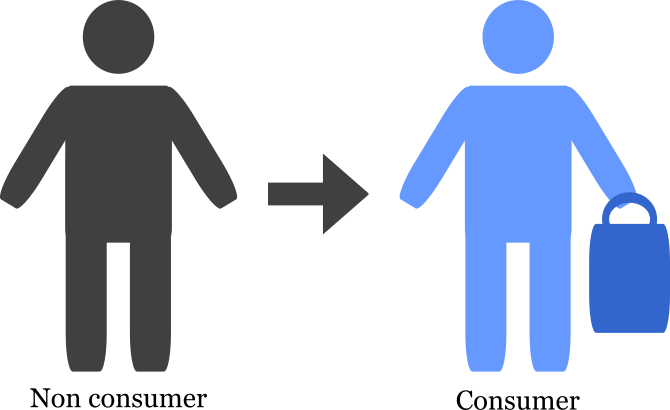

Many of these game-changing ASSURED innovations have some tenets in common.
For instance, converting non consumers to consumers; rethinking -- not just remodelling -- offerings; innovating across product, process and business model; and putting 'better' before 'cheaper'.
The perspective should shift to seeing suppliers as partners, employees as innovators and customers as people.
On the consumer front, it is important to foster empathy and explore co-creation, attack problems that MUST be solved, not those that CAN be solved.
What can be done internally?
Setting 'stretch goals' that sound impossible, challenging the fundamentals, putting your best minds to work, learning from unrelated domains, and interacting with top notch innovators.
Making high technology work for the poor is important, but even more important is believing that they can adapt to it -- they always do.
They are demanding and exacting about what they want from a product or service.
The research, design and development teams must change their mind sets.
Besides aiming at technologically sophisticated performance rich products, they must move towards frugal, functional but high quality products.
Rather than removing features to reduce costs, they must reinvent the products ground up.
Rather than 'technology push product out' approach, they must move to 'customer centric market based' approach.
Rather than using developed world products to transform the existing markets, they must build new global growth platforms based on emerging market needs.
Further, business must try to straddle the entire economic pyramid by not just aiming for premium price high margin products, but also going for affordable price high volume products.
Finally, they must move from current markets-old money mindset, where they keep on fighting for increasing share of a constant sized pie, to new markets-new money mindset, which will help them take a share of the resultant bigger sized pie.
But fundamentally, more than anything else, it requires one to believe in the idea that happiness, health, prosperity, and peace are basic human rights.
That people, regardless of caste, creed, gender, nationality etc are people first.
Innovation is not just for those who can afford it, but for those who need it most.
Let me sum this up.
ASSURED Innovation is the backbone of CSR 2.0.
ASSURED Innovation is the way by which the private sector can achieve the noble goal of doing well by doing good'.
ASSURED Innovation can be a "two word" National Innovation Policy statement for many countries in the world.
ASSURED Innovation can dismantle inequalities by creating the magic of access equality despite income inequality, thereby bringing back social harmony, which is the need of the hour.
Finally, as a proud Indian, I constantly remind myself that India has been a nation that has always been an ambassador of peace and goodwill for the rest of the world.
I am confident that India is well-placed to become the next global ambassador of ASSURED innovation for our assured future, and that too not for a privileged few, but for all.
Thank You.
Dr R A Mashelkar's oration was delivered at the Australian National University and published by the Australia South Asia Research Centre at the ANU.
Dr Raghunath Anant Mashelkar served as director general, Council of Scientific & Industrial Research, and secretary, Department of Scientific & Industrial Research.
Over the years, he successfully led the process of the transformation of CSIR, the nation's premier scientific organisation, which manages 38 laboratories and 22,000 employees. CSIR is today one of the largest chains of industrial R&D labs in the world.
Dr Mashelkar played a pivotal role in framing India's national S&T policies in the post liberalisation era. He also contributed widely to restructuring and reforms in education, S&T institutions and industry, through the several committees he has chaired.
He set up the National Innovation Foundation to acknowledge and reward grassroot innovators.
As one of India's foremost chemical engineers, Dr Mashelkar has made path-breaking contributions in polymer science and engineering and in the engineering analysis of non-Newtonian fluids.
- Readers: You can write to Dr Mashelkar at ram@mashelkar.com

